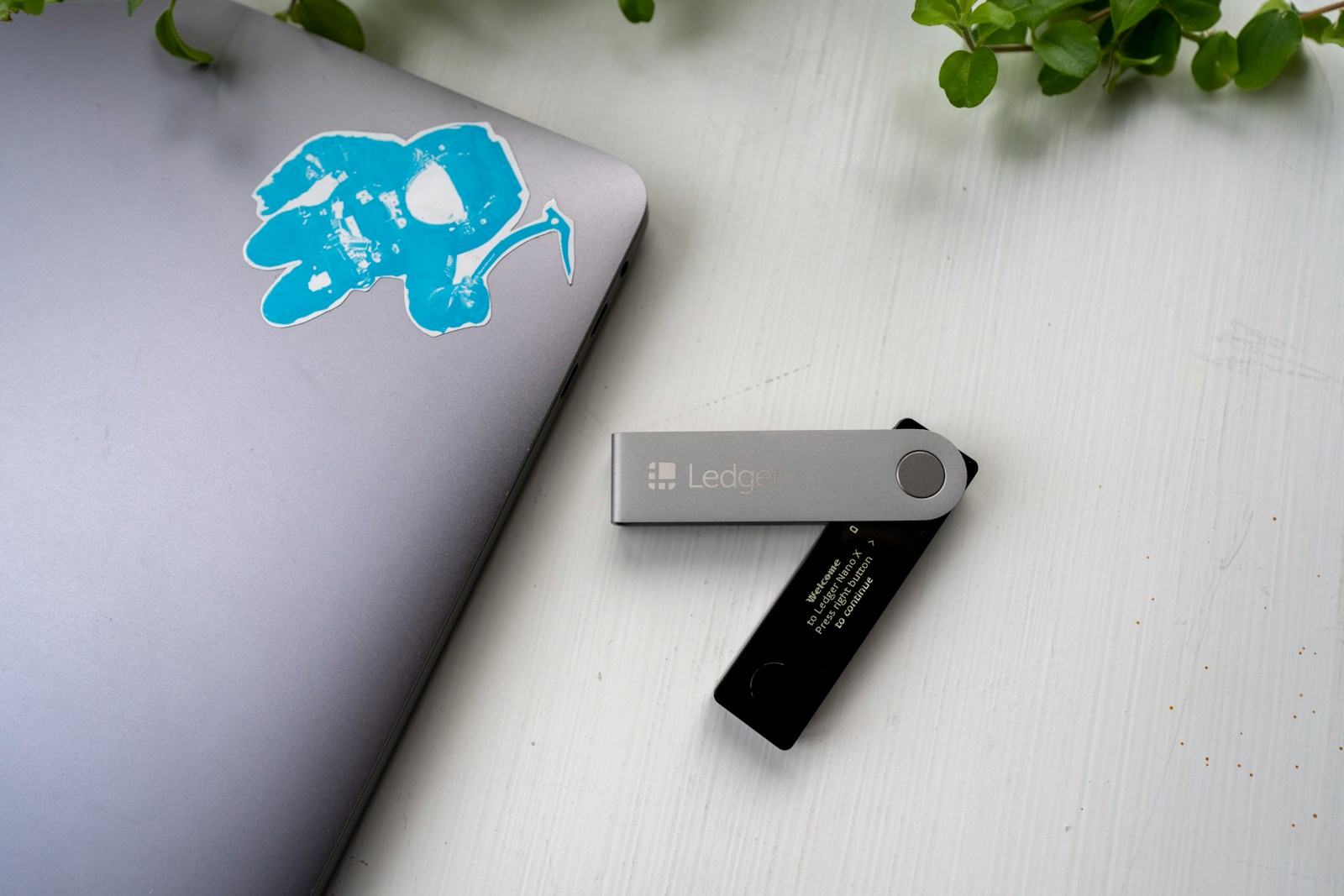
Wallet control demands more than a single point of access to guarantee robust protection. Using a multi-sig setup distributes authorization across multiple keys, drastically reducing risks associated with key compromise or insider threats. Enterprises handling significant digital assets often require at least 2-of-3 signatures to approve transactions, blending operational flexibility with enhanced safety.
The shared nature of this approach enforces collective decision-making and mitigates single points of failure. Unlike traditional wallets secured by one private key, multi-sig configurations mandate cooperation among stakeholders before funds move, ensuring accountability and traceability. Recent market trends reveal an uptick in adoption by decentralized organizations and institutional investors aiming to meet compliance while maintaining user-friendly controls.
How does this translate into real-world benefits? Consider a corporate treasury managing millions in crypto reserves: employing a multi-key scheme prevents unilateral withdrawals and limits exposure even if one device is compromised. This proactive distribution of signing power aligns with modern cybersecurity protocols emphasizing layered defense and continuous risk assessment–key factors for any serious asset custodian.
Multi-signature wallets: extra security layer explained [Crypto Fundamentals basics]
Implementing multi-sig technology significantly enhances asset protection by requiring multiple independent approvals before any transaction can be executed. This approach distributes control over funds, mitigating risks associated with a single point of failure or compromised private keys. For example, a 2-of-3 scheme demands at least two out of three signatures to authorize spending, reducing vulnerability to unauthorized access.
Enterprises particularly benefit from shared signature models by aligning operational procedures with compliance standards and internal governance policies. Instead of relying on one custodian, multi-party authorization enforces accountability and transparency. Companies like BitGo and Coinbase Custody utilize such architectures, illustrating practical deployment where multiple stakeholders must co-sign transactions, thereby minimizing insider threats and external hacks.
Technical principles behind multi-sig protection
The underlying mechanism involves cryptographic scripts embedded in blockchain transactions that specify the required number of valid signatures from designated keys. This programmable condition ensures that no single key holder can unilaterally move assets without consent from others. Importantly, wallet implementations vary across blockchains; Bitcoin uses Pay-to-Script-Hash (P2SH) addresses for multi-sig setups, while Ethereum relies on smart contracts to enforce shared control rules.
An illustrative case is the 2019 Binance hack aftermath when the exchange adopted more rigorous multi-signature protocols to safeguard cold storage wallets. By increasing the threshold of required signatures and distributing keys geographically, they enhanced resilience against coordinated cyber-attacks and internal fraud attempts. Such measures highlight how adjusting signature requirements balances security with operational efficiency.
- Threshold schemes: Common configurations include m-of-n signatures (e.g., 2-of-3 or 3-of-5), tailoring security levels based on risk tolerance.
- Key distribution: Keys should be stored across different devices or locations to prevent simultaneous compromise.
- User roles: Defining signer responsibilities helps maintain orderly approval workflows within enterprises.
Despite its robustness, multi-signature frameworks introduce complexity in recovery processes if signers lose their keys or become unresponsive. Therefore, backup strategies such as secure offline key storage and predefined emergency protocols are critical components alongside shared signature mechanisms. Balancing these aspects ensures sustained control without sacrificing accessibility.
The evolving regulatory environment also influences adoption trends; jurisdictions increasingly recognize multi-sig configurations as best practice for custodial services due to enhanced fiduciary safeguards. Consequently, market demand reflects growing awareness that distributed authorization not only protects assets but also strengthens user confidence amid fluctuating crypto markets and sophisticated threat vectors.
Setting up multi-signature wallets
The initial step in establishing a multi-sig wallet involves defining the number of required signatures for transaction approval. Common configurations include 2-of-3 or 3-of-5 schemes, where multiple private keys must authorize outgoing transfers. This shared control mechanism significantly enhances safety by reducing the risk associated with a single compromised key. Enterprises frequently adopt such setups to distribute responsibility among team members, ensuring that no individual holds unilateral access to funds.
Implementation begins with selecting a reliable platform supporting multi-signature protocols, such as Bitcoin’s P2SH (Pay-to-Script-Hash) or Ethereum’s smart contract-based solutions like Gnosis Safe. Each participant generates their own key pair independently, and the combined public keys form the wallet address. Control over assets is thus decentralized, requiring collaboration among signatories for transaction execution. This approach not only mitigates insider threats but also introduces an added layer of protection against external attacks.
Technical considerations and best practices
When configuring a multi-sig solution, it’s crucial to balance convenience and security by choosing an appropriate signature threshold. For instance, a 3-of-5 arrangement offers strong resilience against individual key loss while maintaining operational flexibility. Conversely, setting the threshold too high might impede timely approvals during urgent situations. Enterprise environments often integrate hardware security modules (HSMs) or cold storage devices to safeguard private keys further, limiting exposure to network vulnerabilities.
Another important aspect is backup and recovery planning. Since multiple keys are involved, losing access to even one can disrupt control unless redundancy measures exist. Organizations typically maintain offline copies of key shares in geographically separated locations to prevent simultaneous loss from natural disasters or targeted attacks. Regular audits and test transactions help verify the integrity of the setup and confirm that all participants understand their roles in signing processes.
- Example: BitGo reported that their custodial multi-sig service reduced theft incidents by over 70% compared to single-key wallets in institutional portfolios during 2023.
- Case study: A decentralized autonomous organization (DAO) implemented a 4-of-7 signature scheme distributed across global members, successfully preventing unauthorized fund movements despite several compromised endpoints.
The choice of software interface also impacts user experience and operational control. Open-source clients allow transparency and customizability but may require deeper technical knowledge for secure deployment. Conversely, commercial solutions often provide integrated dashboards with granular permission settings and audit trails suitable for enterprise compliance demands. Regardless of selection, continuous monitoring of emerging vulnerabilities related to cryptographic algorithms and network protocols remains indispensable.
In summary, establishing a multi-signature environment demands meticulous planning around signature thresholds, key distribution methods, and contingency strategies to maximize protection without sacrificing manageability. By leveraging distributed authorization models combined with robust hardware safeguards, businesses can assert greater command over digital assets while mitigating risks linked to centralized custody points in volatile market conditions.
Managing access and approvals
Implementing shared control mechanisms significantly enhances the protection of digital assets within a wallet. By requiring multiple participants to authorize transactions, enterprises can minimize risks associated with single points of failure or insider threats. For instance, a 3-of-5 scheme mandates that at least three out of five designated signers approve an action, distributing authority and preventing unilateral decisions. This structure ensures that even if one key is compromised, unauthorized operations remain impossible without collusion.
The governance model embedded in such wallets offers granular management over who can initiate or confirm transfers. Enterprises often configure approval thresholds based on operational roles–for example, requiring CFO and CTO signatures for high-value disbursements while allowing lower-tier managers to approve routine expenses with fewer confirmations. This tiered approach balances operational agility with stringent safety protocols, adapting to organizational hierarchies without sacrificing control or protection.
Technical implementation and case studies
The adoption of decentralized signature schemes has demonstrated measurable benefits in sectors demanding rigorous oversight. A notable case involves a blockchain-based fund where a 5-of-7 approval model was implemented for treasury management. During an attempted phishing attack targeting one executive’s key, the transaction was halted because the requisite majority did not approve it, averting potential loss exceeding $10 million. Such real-world examples underscore how distributed authorization mechanisms mitigate exposure to internal errors and external breaches.
Moreover, recent developments in cryptographic protocols enable secure off-chain communication between signatories, reducing latency in consensus formation without compromising safety. Enterprises leveraging these advancements report faster execution times alongside enhanced auditability, as every approval step is recorded immutably on the ledger. This dual focus on efficiency and security exemplifies the evolving standards for safeguarding digital holdings under shared custody arrangements.
Troubleshooting Common Issues in Shared Signature Control Systems
Resolving transaction failures often hinges on verifying the validity and completeness of required signatures within shared authorization frameworks. In scenarios where an enterprise employs a 3-of-5 signature threshold, missing or outdated keys can halt operations, emphasizing the necessity for rigorous key management protocols. Ensuring synchronized updates across all participants’ devices mitigates risks of stale data causing transaction rejections.
Another frequent challenge lies in coordinating control among distributed parties without compromising operational agility. For instance, latency in obtaining signatures from remote collaborators can delay critical asset transfers, highlighting a trade-off between collective oversight and prompt execution. Deploying automated notification systems and fallback signing procedures substantially improves workflow continuity while preserving protection standards.
Key Technical Insights and Forward-Looking Implications
1. Signature Aggregation and Verification Efficiency: Advances in cryptographic schemes, such as Schnorr signatures, enable aggregation that reduces on-chain footprint and verification costs. Enterprises adopting these methods experience up to 40% lower gas fees and faster confirmation times compared to traditional ECDSA-based approaches.
2. Dynamic Access Controls: Implementing adaptable quorum configurations allows organizations to recalibrate control thresholds in response to evolving risk profiles or team changes without redeploying contracts. This flexibility enhances resilience against internal threats while maintaining robust safety guarantees.
3. Integration with Hardware Security Modules (HSMs): Tying multi-party authorization mechanisms to dedicated HSMs elevates protection by isolating private keys from software vulnerabilities. Real-world deployments reveal significant reductions in unauthorized access attempts when HSMs enforce strict signature generation policies.
The trajectory of collaborative signature systems points toward deeper interoperability with decentralized identity solutions and zero-knowledge proofs, fostering even stronger assurances of authenticity without exposing sensitive information. As blockchain ecosystems mature, enterprises will likely adopt hybrid models combining off-chain coordination with on-chain enforcement to optimize both security and efficiency.
- Enhanced monitoring tools will provide granular visibility into signer activity patterns, enabling proactive anomaly detection before breaches occur.
- Smart contract upgradeability features will support seamless incorporation of novel cryptographic primitives as they emerge.
- Cross-chain shared custody frameworks promise unified control over assets dispersed across heterogeneous networks, expanding operational scope without sacrificing protection integrity.
The balance between collective decision-making and streamlined execution remains pivotal for safeguarding digital assets within complex organizational structures. By systematically addressing common pitfalls–such as incomplete signatures or misaligned access rights–and leveraging state-of-the-art innovations, stakeholders can reinforce their defenses against increasingly sophisticated threats while preparing for future challenges inherent in distributed asset management.








